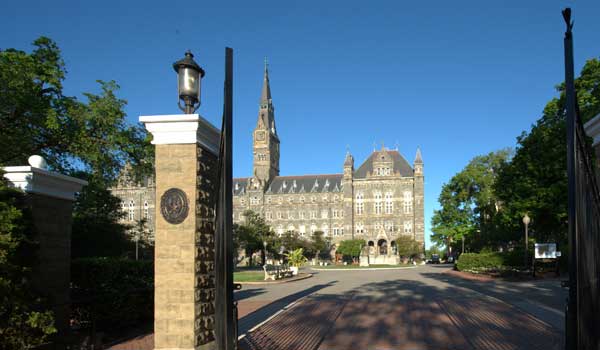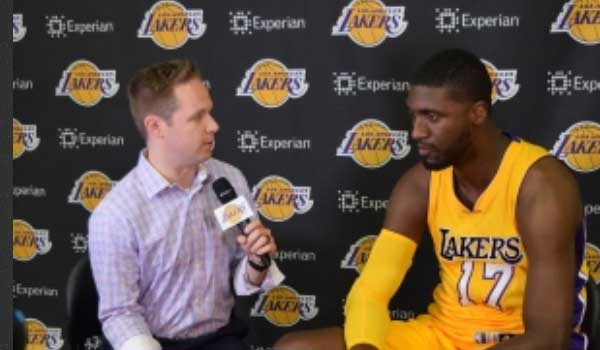Peacock: 37% Increase Ahead

The price of watching Big East basketball is about to go up.
A story at Vulture reports that Peacock, the streaming division of NBC Universal which will be broadcasting a number of Big East games for the next six years, is increasing monthly fees from $7.99 to $10.99 per month, with its ad-free tier increasing to $16.99. The increase is nearly double what the streamer, then priced at $5.99 with ads, charged just over a year ago.The price increase is not going to the Big East, however.
"The move is not entirely unexpected," writes Vulture's Josef Adalian. "For one thing, almost all streamers have sharply raised rates the past few years, and Peacock likely won't be the last to do so this year. But this specific increase seemed inevitable in the wake of NBCU's massive investment in sports content, particularly the NBA, which arrives on the platform in October."
Peacock will be joined by ESPN+ for third tier Big East media rights this season. A subscription for ESPN+ is now $11.99 per month.
Hoyas To Participate In August Tournament

Georgetown is one of two NCAA teams which will participate in a four day international tournament in Toronto.
The event, known as Globl Jam, will feature the Georgetown men's team and the Texas women's team to represent the United States in three exhibitions against under-23 teams from August 13 through August 16. The Hoyas will meet teams from Canada, Brazil, and Japan, with a medal round to follow August 17."We're honored for this opportunity to represent the United States at Globl Jam in Toronto," head coach Ed Cooley said in a news release. "This is a special chance for our players to compete internationally, grow together, and immerse ourselves in a new culture through sport."
Games will be held at the Mattamy Athletic Centre, a building which once housed the venerable Maple Leaf Gardens from 1931 to 2003. Georgetown actually played at the Gardens once before: a December 10, 1994 game versus Memphis, won by the Hoyas 83-80 (OT) before 10,380 in attendance and a national TV audience on ESPN.
At present, the games will be broadcast on Rogers Sportsnet and Sportsnet+, both of which are georestricted within Canada and not available in the US.
For additional information, please visit the Globl Jam site.
John K. Rode (1935-2025)
In a unusual coincidence, a second member of the 1955-56 varsity has died on the same day.
Three days ago, we reported on the death of Ed Gallaher (C'58) on July 1 of this year. Now, from Legacy.com, news of the passing of Ken Rode (C'57), who played two seasons from 1954-56 and also died on July 1.A 6-4 forward from New York's St. Francis Prep, Rode suffered a season-ending knee injury in the ninth game of his sophomore season, and played just two games as a junior before ending his basketball career. Following Georgetown, he served as an attorney in private practice for over a half century, specializing in civil litigation, product liability, and labor law.
Rode is survived by his wife of 65 years, three children, and seven grandchildren.
The Road To The Front Office

Twenty years ago, Jonathan Wallace (C'08) was a sophomore at Georgetown who had just earned a scholarship following a season as a walk-on. Today, he's the new executive vice president with the NBA's Denver Nuggets.
The Colorado Springs Gazette has a feature on Wallace, now 39, with quotes from two former Georgetown coaches on his development on and off the court.Upon being recruited by then-Princeton coach John Thompson III, "I remember him asking, 'Will I get a fair shot?'", said Thompson. "I was like, sure, I want to put the best players out there. I want to put the guys out there that are going to give us the best opportunity to win. But I made it clear to him I didn't think he was going to play that much at all."
"At Georgetown, I can honestly say I wanted Jon Wallace the person as much as Jon Wallace the basketball player."
Wallace started all 136 games of his Georgetown career, scoring 1,258 points. In the intervening years, just seven Georgetown players have scored as many.
Following a pro basketball career overseas, Wallace served as a special assistant to Thompson, and later, to Patrick Ewing.
"The dedication and the hard work that he put in has definitely been that way from the first time I met him," said Ewing. "He's great. He and my son have been friends ever since back then in school."
"Denver's done an outstanding job of bringing him back to the fold," Ewing added. "I think he's going to do an outstanding job there. Like everyone, I want him to be successful."
Opting In

While it never confirmed this in public, Georgetown University has opted in for the House v NCAA settlement, according to the College Sports Commission (CSC).
The CSC, a new entity that will govern name, image, and likeness payments in conjunction with the NCAA, lists Georgetown among 310 Division I schools opting into the agreement, which allows universities to offer direct revenue sharing with student-athletes. All 11 Big East schools opted in; notable opt-outs included the military academies, the Ivy League, the Patriot League, The Citadel, VMI, and six of the schools of the Northeast Conference. Nine schools below Division I opted in as well, mostly among schools playing a single Division I sport, such as Johns Hopkins lacrosse."The cap for the 2025-26 academic year is $20.5 million per school," reads its web site. "With a few potential exceptions, the cap will then increase four percent the following two years and will be reevaluated every three years over the duration of the 10-year settlement period. Student-athletes can receive this direct compensation in addition to their athletic scholarships, third-party NIL earnings and other previously permitted educational benefits." Georgetown has not disclosed the amount it intends to share, nor which sports outside men's basketball would be eligible.
The agreement, as discussed last year on this site, allows opt-in schools to offer full scholarships for all roster positions across all sports, subject to a roster cap per sport. The cost of full scholarships makes full-roster scholarships infeasible at Georgetown; for example, men's lacrosse increasing from a limit of 12.6 to as many as 48 scholarships, and football jumping to 105.
As to men's basketball (a roster cap of 15), the 2025-26 Georgetown roster has 12 scholarship players and four walk-ons; however, the walk-ons are grandfathered in for the duration of their eligibility.
Kenner League On The Move Again

Following an abbreviated schedule at Bowie State University last summer, the Kenner League will relocate to Catholic University July 19, per a social media post.
Founded in 1982 and held at McDonough Gymnasium through 2023, the summer league could not secure an agreement with Georgetown last summer over the use of the gymnasium. Similar efforts to play at Burr Gymnasium (Howard) and the UDC athletic center fell though, leading the league to move to Bowie State for an amended four weekend slate in 2024."Based on conversation with multiple sources, blame touches upon money primarily, as in charged and paid, along with frayed relationships and possibly unreasonable expectations," wrote Ron Bailey at Hoya Report last summer.
Amid separate reports that Nike is no longer a presenting sponsor of the event, Kenner director Van Johnson posted the following message on Tuesday:
We are 5 days away from Kenner Summer League games starting at Catholic U. Wanted to send out the Schedule. The league is NCAA approved. Division 1 players are eligible to play. Enclosed is the schedule if you have any questions. Feel free to DM me.
— Van Johnson, Jr. (@johnsonvj05) July 14, 2025
Best Kenner League pic.twitter.com/yXErz32JgW
In its formative years, Kenner was seen as a means to provide supervised competitive opportunities to Georgetown freshmen and other college newcomers in a period where formal practices under direct coaching supervision were not allowed by the NCAA. Subsequent changes to those rules and the presence of a full-time practice facility at Georgetown reduces the need of players to stay in shape over the summer and compete in events such as these.
In addition, as more players across schools stay on their respective campuses and do not return home for the summer, fewer Division I players are likely to compete. Further, the occasional appearances of pro players to compete in Kenner has been largely militated by NBA Summer League commitments and liability issues which restrict outside activity by NBA and G-League talent.
Absent the Kenner League or a public scrimmage, Georgetown fans may not be seeing the 2025-26 team in any competitive setting until its October 18 exhibition at George Washington.
Edward J. Gallaher III (1935-2025)
Edward Gallaher (C'58), a member of the 1955-56 Georgetown varsity, died July 1 at the age of 89.
A 6-3 guard from Hagerstown, MD, Gallaher played in two games his sophomore season before moving on to baseball, where he played three seasons as a pitcher. Following Georgetown, he served 35 years in the U.S. Navy and also worked in the Office of Naval Intelligence before retiring in 1996.Survived by his wife, six children, 17 grandchildren, and 16 great-grandchildren, internment is scheduled for Arlington National Cemetery.









